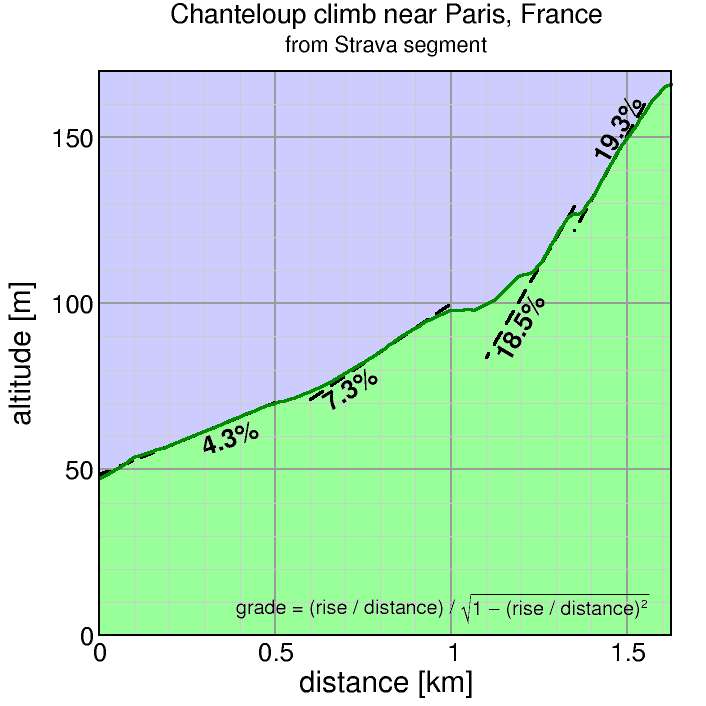gearing on the 1949 Poly Chanteloup by the Herse tandem
I've been reading Jan Heine's truly excellent book, "René Herse". Here's a quote, referring to the tandem ridden by the builder's daughter Lili and Rene Prestat in winning the 1949 Poly Chanteloup, a circuit race which included a popular climb outside of Paris:
A single chainring was sufficient for the 14% of the climb of Chanteloup, which had to be climbed eight times. In 1950 a report listed the gearing of their tandem: a single chainring with 46 teeth and a 5-speed freewheel with 13-15-18-21-22 teeth. They never used the 22-tooth cog, and they made their attack with the 46-18.
I figured 14%? Sure, typical French hyperbole. It's probably 14% on the inside of a switchback. And indeed, the book has a route profile which shows the climb to average only 7%. Riding a 46-18 up a 7% grade is still a considerable gear. I PR'ed Old La Honda Road, which averages 7.3%, riding a 36-18, and the tandem gear was 28% bigger.
So I checked Strava. Here's the Chanteloup climb as viewed with VeloViewer, which produces excellent hill profiles from Strava data:


14%? It's more like 15% sustained, with a nice little dose of 16% to loosen up the legs. Even the portion leading up to that is steep, exceeding 8%. I simply cannot imagine climbing that on a tandem, where riders typically spin due to the synchronization challenges, with a 46-21 low gear.
The profile I prepared directly from the Strava data is even meaner-looking:

At least the climb is short. The portion in the segment (it continues to climb a bit more, gradually, following the segment gains 120 meters, which is only 30% of Old La Honda's altitude gain. But the riders climbed it eight times in the race.
A word about these races: it is curious seeing a race where the winning bike has a front rack, full-length fenders, and even mud flaps. But those were required by the rules, as they were randonneuring events. These were in the spirit of the Low-Key Hillclimbs, where results were counted, winners were announced, but participation was at least as important as results. This was particularly important because racing at the time lacked the deep age-and-accomplishment based category system available in U.S. racing.

Comments